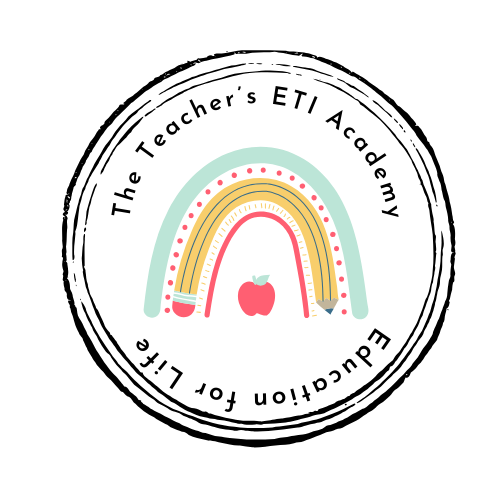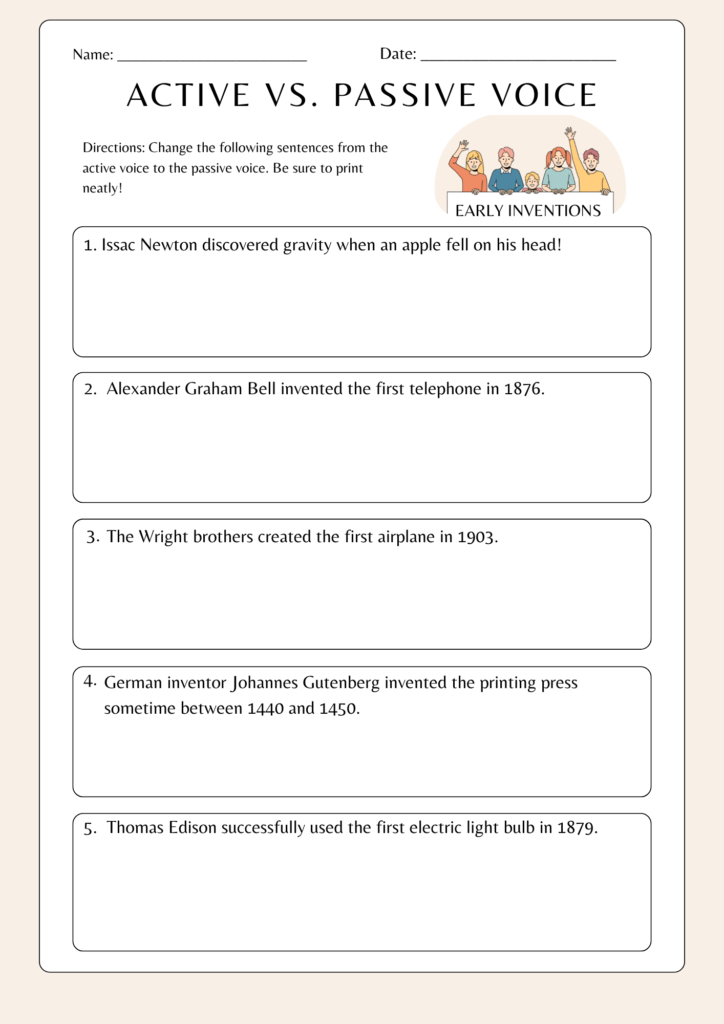Active vs Passive Voice
Get this free active vs passive voice resource to highlight the difference in language when teaching students to write sentences.
English Language Skills in Students
Enhance your students’ writing skills with our FREE Active vs. Passive Voice Resource, designed to make teaching sentence structure engaging and effective!
- English Language Teaching Resources
- English Language Classroom Resouces
- Elementary School English Resources
- Middle School English Resources
- High School English Resources
Language skills building starts with learners in elementary and middle begins with understanding how we gain knowledge through two very important skill sets: passive and active skills.
Your Free English Language Guide by The ETI Academy
Unlock your potential with our Free English Language Skills Resource! Designed for learners at all levels, this invaluable tool emphasizes the distinction between active and passive language skills, helping you understand and develop your proficiency effectively.
Sign up below to download this free resource that helps teachers work with students in English language arts classes to understand and build effective language skills in the classroom.
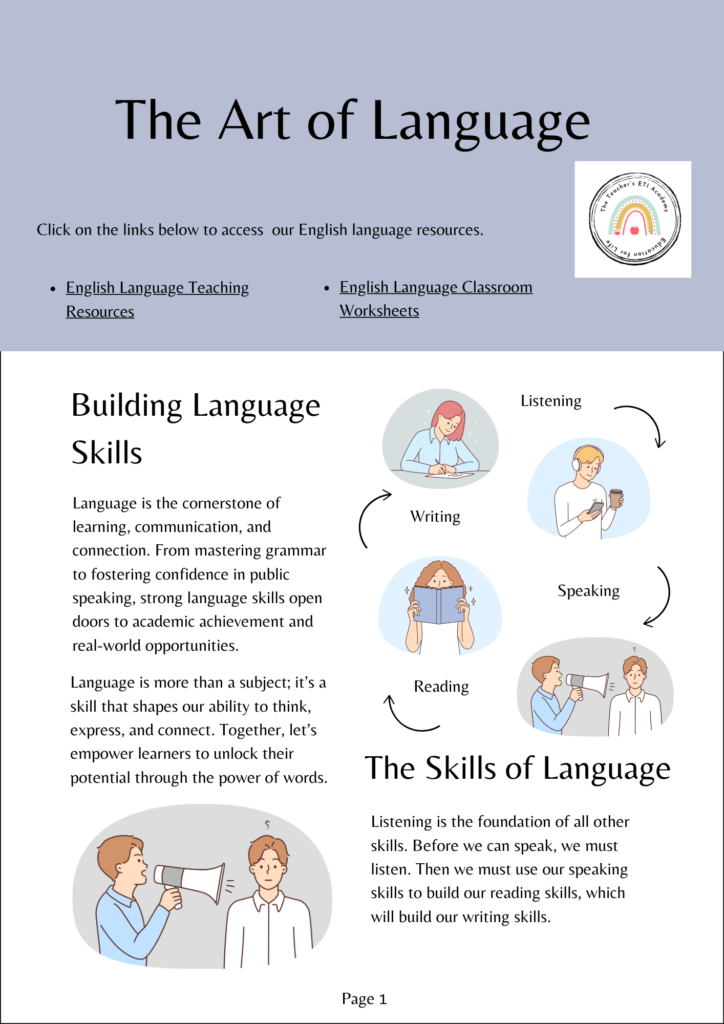
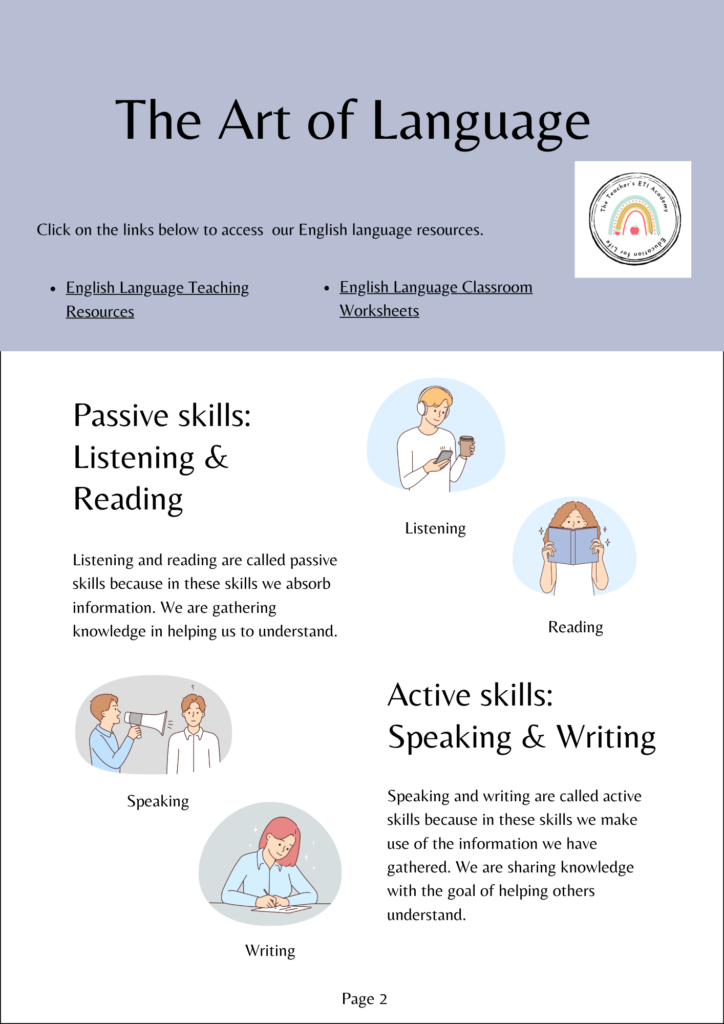
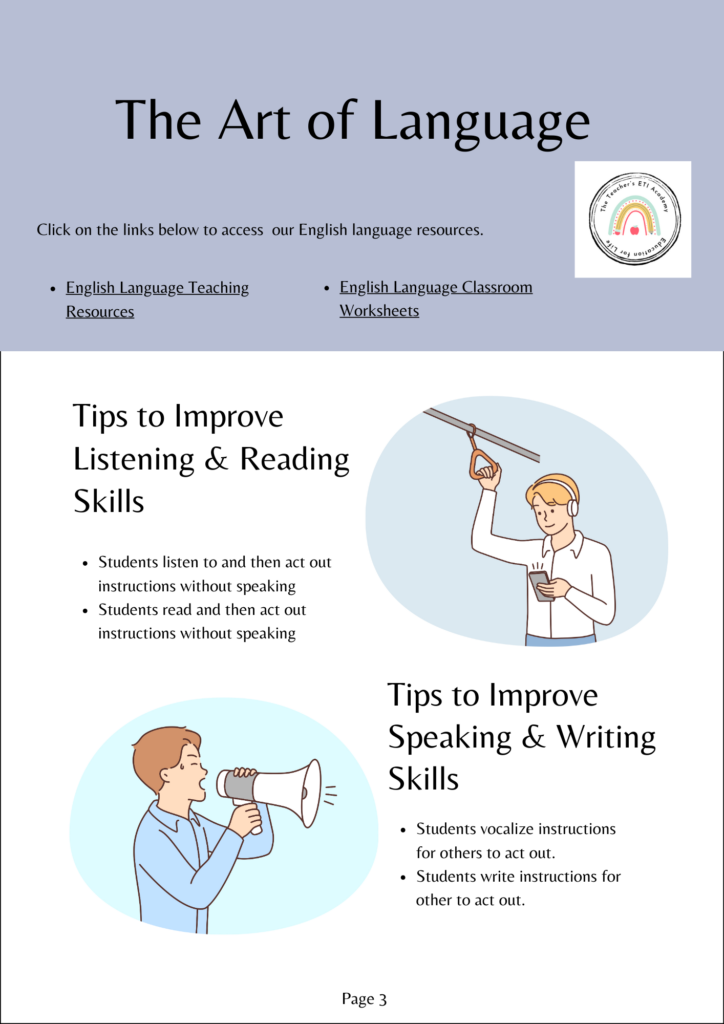
With clear explanations, this resource empowers you to enhance your reading, writing, listening, and speaking abilities. Teaching students to understand and value both passive and active skills, this simple resource is an easy reminder to mastering important skills in English. Don’t miss out on this opportunity to elevate your language skills—download your free English language skills resource today!
Why Focus on Active and Passive Skills?
Language learning involves two primary skill types: active and passive. Active skills include speaking and writing, where students are producing language and using it creatively to express ideas, opinions, and emotions. These skills require students to think on their feet and draw from their existing knowledge of vocabulary, grammar, and syntax.
On the other hand, passive skills—reading and listening—focus on understanding and interpreting language. These skills enable students to absorb information, process meaning, and make sense of context, tone, and structure. Mastering both skill sets is crucial for students to become well-rounded communicators.

Our free Language Arts resource provides materials, exercises, and activities aimed at balancing both these skill types, allowing students to build comprehensive language skills that can support them across subjects and in their everyday lives.
Let’s take a closer look at the differences between these skills.
Passive Skills
In learning a new language, students should come to undertstand that there are two main skills: passive and active skills. Passive skills are ones that allow students to absorb information they can use to understand what they are learning. The first skill is listening. Students should master their listening skills to understand how sound begins language learning. The second passive skill is reading. Reading takes the sounds students have learned that form words into words that form sentences.
Active Skills
Active skills build on passive skills. Students start with the foundation of their listening skills; which is a passive skills. When students master listening for sounds as it connects to the rhythm and intonation to form words, they can begin to build active skills to create the same sounds aloud.
Active skills are a way to show others that students have understood how to interpret and use their passive skills. The active skills are speaking and writing.
Here is a sample of passive (listening) and active (speaking) skills our sister website EduKitchen made back in 2020.
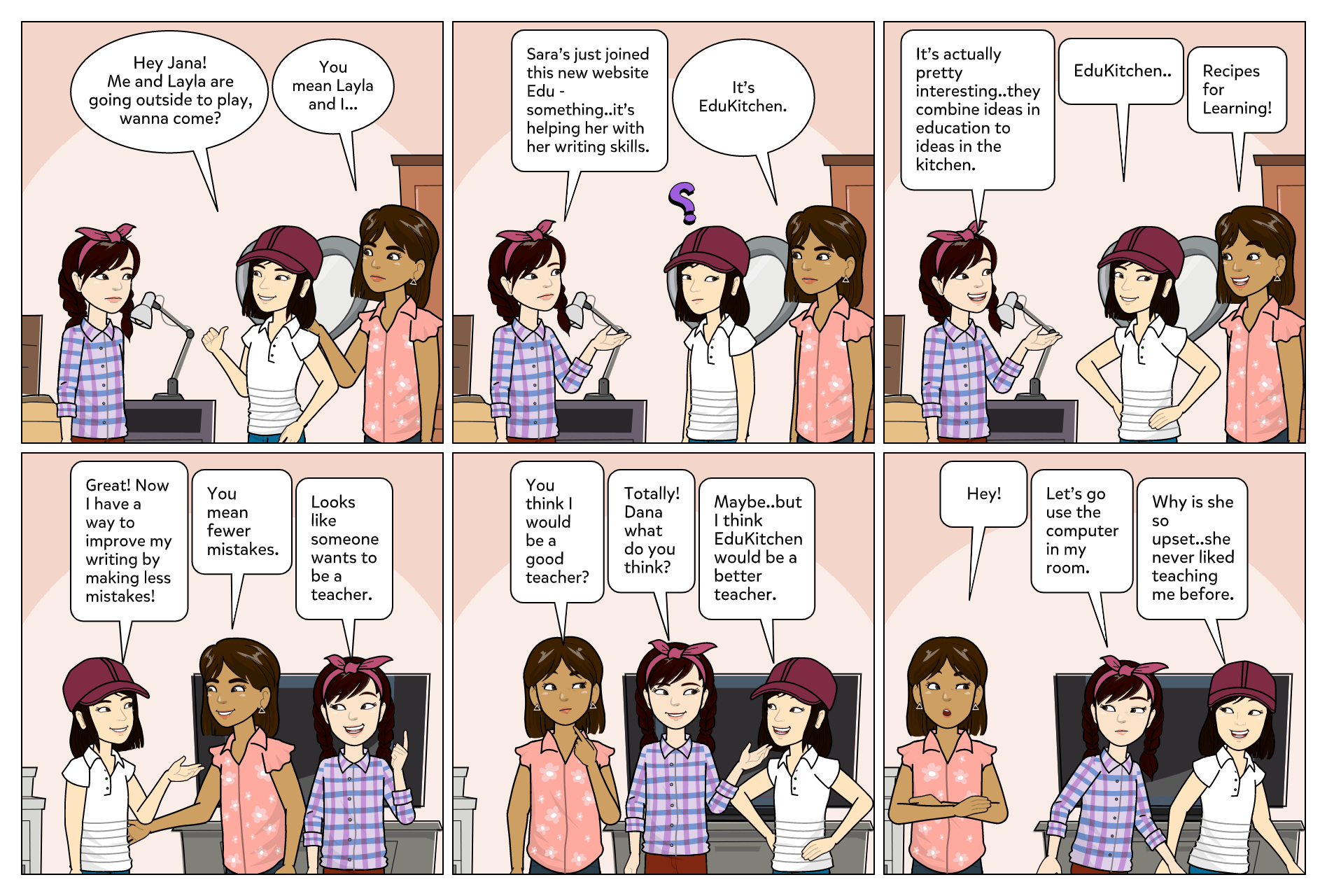
Finally, it is to be understood that passive skills are for the benefit of the user, while the active skills are for the benefit of who the user interacts with in oral or written communication.
Join Us Today!
These strategies help teachers and students connect their teaching and learning together with a safe classroom environemnt.

Related Pages
- English language and grammar skills building worksheets
- English writing worksheets
- English language resources for teachers
- Skills to language learning
- English Writing Strategies for Students
- Educational resources for language learning
- Teacher Blogs that Inspire
- Students Blogs that Motivate
Contact Us
Have questions or need support? We’re here to help! At ETI Academy, we’re committed to providing educators and homeschooling parents with the resources they need to inspire learning. Whether you’re looking for guidance on our worksheets, teaching guides, or any of our educational materials, don’t hesitate to reach out. You can contact us through our online form, email, or social media channels. We value your feedback and look forward to assisting you in making education engaging and impactful. Let’s work together to inspire the next generation of learners!
